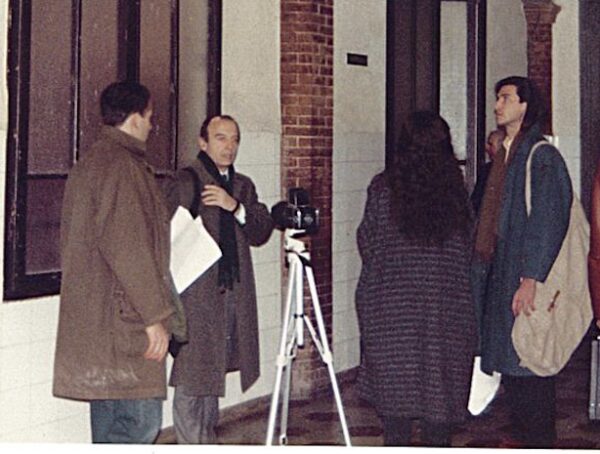Energy drives our fast-paced modern world. But, where does it come from? In 2022, the UK’s inland energy consumption breakdown was: 36% for Oil, 39.3% for Gas, 10.7% for Bioenergy and Waste, 10.9% for Primary Electricity and 3% for Coal. In 1990, Bioenergy and waste made up a barely noticeable slice of the pie chart (0.3%) and today it accounts for more than coal – which was 31.3%. Nevertheless, fossil fuels still dominate the UK’s energy supplies. We might not think about these statistics as we carry on with our day, but that doesn’t deny the fact that they relate to every aspect of our lives – from travelling to meet loved ones to heating our homes. We need to be aware of our current energy mix as well as the better alternatives. That’s where Vitra Design Museum comes in, with a show dedicated to such innovative design: Transform! Designing the Future of Energy. The exhibition covers a broad variety of everyday objects and structures, from storage facilities to wind power stations. Visitors will encounter new product designs and speculative projects spanning across architecture, film and conceptual pieces. They prompt us to ask: How can design contribute to an increase in the use of renewable energy sources? How can industry, government policies and every one of us help to achieve the transition to a sustainable future?

Design gives form and shape to the new age of sustainable energy. Vitra Design Museum’s new show plays an essential role when it comes to visualising the future. The first part of the exhibition, titled Human Power, looks at our relationship to energy. Here, visitors are invited to discover their own potential for generating energy. By pedalling on stationary exercise bikes, they can see how long it takes to produce enough electricity for common activities such as brewing coffee, browsing the web or taking a hot shower. The machine is designed by Energym, a smart-tech fitness company based in Birmingham, whose primary mission is to create ‘a fitter, healthier planet.’ They’ve taken the idea of using the energy generated from a workout and turned it into a reality through a line of powerful exercise bikes created for home and work spaces. Within the exhibition, this apparatus serves to highlight what could be possible in the future.

The next section of Transform displays experiments, products and prototypes for living without a connection to the conventional energy infrastructure. Here, we find everything from Pauline van Dongen’s Solar Shirt (2015) to Stefan Troendle’s Hydrogen Cooker. We also encounter work from Pablo Bras, who is a curator, designer and scenographer known for projects that span images, objects, texts and spaces. On view is his speculative project Available Networks, which explores the potential of capturing incidental flows of energy in and around the home – from the wind blowing across the roof to rainwater running down the gutter pipe. Each moment produces a small amount of power and Bras investigates how we could harness these small bursts of energy in our daily lives. The desire to do so is not new, as Vitra traces the history of self-sufficient designs to past projects. For example, in the 1950s, visual artists Charles and Ray Eames were already using photovoltaic technology to set a sculpture in motion. Sunlight powered the spinning shapes and spirals of their Solar Do-Nothing Machine. They created it to promote alternate energy sources. Charles said: “Then it occurred to us that there are some things worth promoting, and the conservation of natural resources looked like a likely one. A demonstration of solar energy as a practical source of power appeared to be a not uninteresting way of promoting resource conservation.”

All forms of energy production, distribution and storage have a spatial footprint, whether through the extraction of the required raw materials, the construction and operation of buildings for generating or transforming power or the infrastructure needed to store and distribute energy. The last section of the exhibition addresses this by imagining Future Energyscapes. Here is Hot Heart, a series of islands in Helsinki, Finland, with the dual function of storing thermal energy and serving as a recreational hub. Italian architect and engineer Carlo Ratti (b. 1971) designed the pioneering proposal that won the Helsinki Energy Challenge, which aims to decarbonize the heating system of the Finnish capital by 2030.
This is a sweeping exhibition that covers a range of designs – from fabric and stationary bikes to architecture and transport – mirroring the role energy plays in our daily lives. Transform emphasises that the transformation of energy systems must encompass more than just the expansion of renewable energy sources. The intelligent design of everyday objects and the implementation of visionary urban designs and infrastructure are crucial. Designers and architects around the world are already contributing innovative solutions for reducing our energy consumption, changing our energy-intensive lifestyles and participating in the process of achieving a sustainable future. This is a show that acknowledges energy as one of the greatest challenges of our time – but also one of the greatest opportunities to reshape our world.







